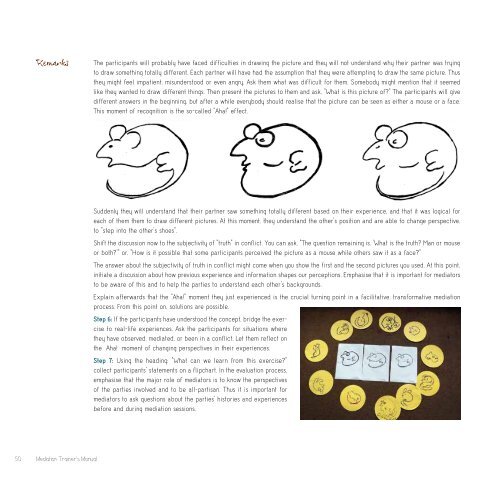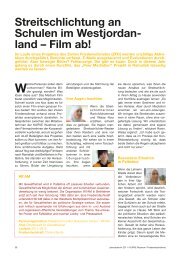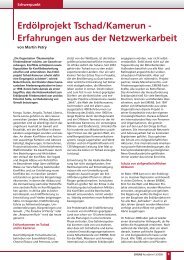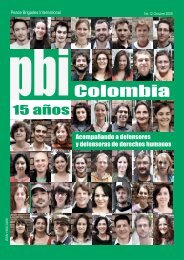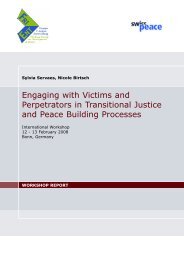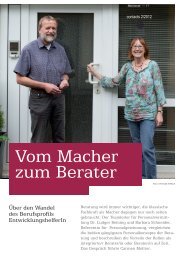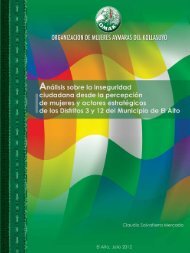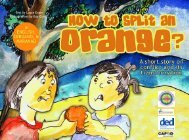Merging Ethiopian Wise-Counsel Mediation and Facilitative ...
Merging Ethiopian Wise-Counsel Mediation and Facilitative ...
Merging Ethiopian Wise-Counsel Mediation and Facilitative ...
- No tags were found...
You also want an ePaper? Increase the reach of your titles
YUMPU automatically turns print PDFs into web optimized ePapers that Google loves.
The participants will probably have faced difficulties in drawing the picture <strong>and</strong> they will not underst<strong>and</strong> why their partner was tryingto draw something totally different. Each partner will have had the assumption that they were attempting to draw the same picture. Thusthey might feel impatient, misunderstood or even angry. Ask them what was difficult for them. Somebody might mention that it seemedlike they wanted to draw different things. Then present the pictures to them <strong>and</strong> ask, "What is this picture of?" The participants will givedifferent answers in the beginning, but after a while everybody should realise that the picture can be seen as either a mouse or a face.This moment of recognition is the so-called "Aha!" effect.Suddenly they will underst<strong>and</strong> that their partner saw something totally different based on their experience, <strong>and</strong> that it was logical foreach of them them to draw different pictures. At this moment, they underst<strong>and</strong> the other's position <strong>and</strong> are able to change perspective,to "step into the other's shoes".Shift the discussion now to the subjectivity of "truth" in conflict. You can ask, "The question remaining is, 'What is the truth? Man or mouseor both?'"’or, "How is it possible that some participants perceived the picture as a mouse while others saw it as a face?"The answer about the subjectivity of truth in conflict might come when you show the first <strong>and</strong> the second pictures you used. At this point,initiate a discussion about how previous experience <strong>and</strong> information shapes our perceptions. Emphasise that it is important for mediatorsto be aware of this <strong>and</strong> to help the parties to underst<strong>and</strong> each other's backgrounds.Explain afterwards that the "Aha!" moment they just experienced is the crucial turning point in a facilitative, transformative mediationprocess. From this point on, solutions are possible.Step 6: If the participants have understood the concept, bridge the exerciseto real-life experiences. Ask the participants for situations wherethey have observed, mediated, or been in a conflict. Let them reflect onthe “Aha!” moment of changing perspectives in their experiences.Step 7: Using the heading: "What can we learn from this exercise?"collect participants' statements on a flipchart. In the evaluation process,emphasise that the major role of mediators is to know the perspectivesof the parties involved <strong>and</strong> to be all-partisan. Thus it is important formediators to ask questions about the parties'’histories <strong>and</strong> experiencesbefore <strong>and</strong> during mediation sessions.50 <strong>Mediation</strong> Trainer’s Manual


